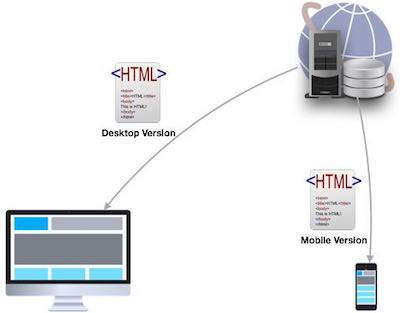Mobile SEO Millions of users these days access the web using smartphones running on Android, iOS, or Windows. Hence, it has become imperative that websites adapt themselves to this changing environment and make suitable changes in their website design to attract more viewership.
The desktop version of a site might be difficult to view and use on a mobile device. The version that is not mobile-friendly requires the user to pinch or zoom in order to read the content. Users find this a frustrating experience and are likely to abandon the site. In contrast, a mobile-friendly version is readable and immediately usable.
A recent Google update makes it mandatory that a website should be mobile-friendly to be effective on Mobile Search Engines. Note that a website that is not mobile-friendly will not have any impact on regular search engines either.
In this chapter, we will see how to make a website mobile-friendly in order to ensure the visitors who access the website from mobile devices have an optimized experience.
What is Mobile SEO?
Mobile Search Engine Optimization is the process of designing a website to make it suitable for viewing on mobile devices of different screen sizes having low bandwidth. Apart from following all the SEO rules which are applicable to a desktop website, we need to take additional care while designing a website for mobile devices. A website is mobile friendly if it has the following attributes −
- A good mobile website has a responsive design which performs well on desktops as well as mobile devices. It not only reduces the maintenance of the website but also makes the content consistent for the search engines.
- The contents of a good mobile website are easy to read on a mobile device without having to zoom the screen. It has appropriate fonts, colors, and layouts.
- It is easy to navigate through a good mobile website on a small screen. It provides links and buttons that can be easily maneuvered using a finger.
- A good mobile website is lightweight such that it takes less bandwidth and time to load on mobile networks.
- The Home Page of a mobile website plays the most important role in connecting users to the content they are looking for. Therefore, good mobile websites make sure the most important links are displayed on the Home Page so that they get enough visibility.
The ranking of a website depends heavily on how user friendly it is. You can follow the guidelines given below to design a great mobile-friendly website.
Optimize Your Site for Mobile
If your site is already optimized for search engines, then it should not be too difficult to optimize it for mobile devices. First, let us understand what it takes to go mobile. We can categorize the steps into three broad categories −
Step 1 − Select a Mobile Configuration
Step 2 − Inform Search Engines
Step 3 − Avoid Common Mistakes
Select a Mobile Configuration
There are three different mobile configurations that you can choose from −
Step 1 − Responsive Web Design
Step 2 − Dynamic Serving
Step 3 − Separate URLs
Each has its own advantages and disadvantages. Google recommends responsive design, however it supports all three configurations. The following table shows how the mobile configuration affects your URL and HTML code −
| Mobile Configuration | URL | HTML |
|---|---|---|
| Responsive Web Design | Stays the same | Stays the same |
| Dynamic Serving | Stays the same | Different HTMLs |
| Separate URLs | Different URLs | Different HTMLs |
Responsive Web Design
Google recommends responsive web design become it is the simplest mobile configuration and very easy to implement. It serves the same HTML code on the same URL, however it adjusts the display based on the screen size of the mobile device.

Dynamic Serving
Dynamic serving is a type of mobile configuration where the URL of your website remains unchanged, but it serves different HTML content when accessed from a mobile device.

When your content is dynamically served from the server, make sure you inform Google that the content it is crawling may look different on mobile devices. A major drawback of this approach is that you will have to do additional processing on your content at the server level before severing it to the user. This approach puts unnecessary load on your server and makes it slow.
Separate URLs
When you maintain two different URLs — one for mobile users and another for desktop users – make sure you inform Google explicitly when to serve which version. Google does not recommend separate URLs because it can detect automatically that your mobile pages are different from your desktop pages.

This approach is not practical when you have a big website because maintaining two versions of the same website will require double the effort and money. At the same time, you cannot avoid various discrepancies in your content while maintaining two versions.
From the viewpoint of SEO, each URL performs separately. Hence your desktop ranking will never be added to the mobile ranking and they will always be assumed as separate websites. We don’t recommend maintaining different URLs for mobile and desktop versions if you want to draw the benefits of SEO.



No comments:
Post a Comment